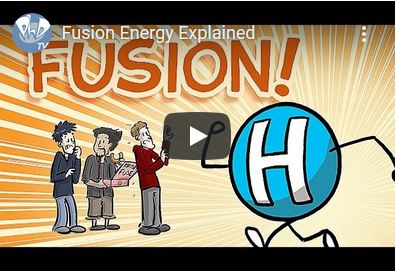Fusion on Earth
Credit © ITER Organization, http://www.iter.org/
Meeting Earth’s energy demands
Our current energy landscape is heavily dependent on the fast-depleting fossil fuels, with 80% of the global energy consumption being based on fossil fuels, and changing this dependence is critical to cut down on the greenhouse gas emissions. Once harnessed, fusion has the potential to be a nearly unlimited, safe and CO2-free energy source.
On the Sun, the process of fusion is driven by the Sun’s immense gravitational force and high temperatures. But the Earth does not have the immense gravitational force required to confine the hydrogen nuclei. So a different approach is needed to achieve fusion reactions on Earth.
150 million degrees Celsius
In order to achieve fusion on Earth, gases need to be heated to extremely high temperatures of about 150 million degrees Celsius. That is 10 times more than the temperatures in the Sun’s core. Fusion researchers have established that the easiest to accomplish fusion reaction on earth is that between two hydrogen isotopes: deuterium, which is extracted from water, and tritium, which is produced in the wall of the fusion reactor from lithium. When deuterium and tritium nuclei fuse, they form a helium nucleus and a neutron with a lot of energy.
Deuterium-Tritium
fusion fuel of the future
A magnetic cage
Fusion scientists have developed methods that are able to heat plasma to temperatures of 150 million degrees Celsius. There exists no material however that can contain plasmas at such unimaginable temperatures. So, different plasma confinement methods are used by fusion scientists. One of them is the magnetic confinement wherein the hot plasma particles are contained in a magnetic “cage” made by strong magnetic fields which prevent the particles from escaping. For energy production the plasma has to be confined for a sufficiently long period for fusion to occur.
Did you know...
The tokamak
The most advanced and best investigated fusion device design available today is the tokamak. Tokamak is a Russian acronym for the term Тороидальная Камера с Магнитными Катушками meaning a torus-shaped vacuum chamber surrounded by magnetic coils, which create a toroidal magnetic field. The largest operating tokamak today is EUROfusion’s flagship device the Joint European Torus or JET. It is located in the Culham Centre for Fusion Energy. ITER, the biggest fusion experiment, being built in Cadarache, France, is also a tokamak. Once operational, ITER will demonstrate the feasibility of fusion as an energy source.
Tokamak
an acronym for a torus-shaped vacuum chamber surrounded by magnetic coils

